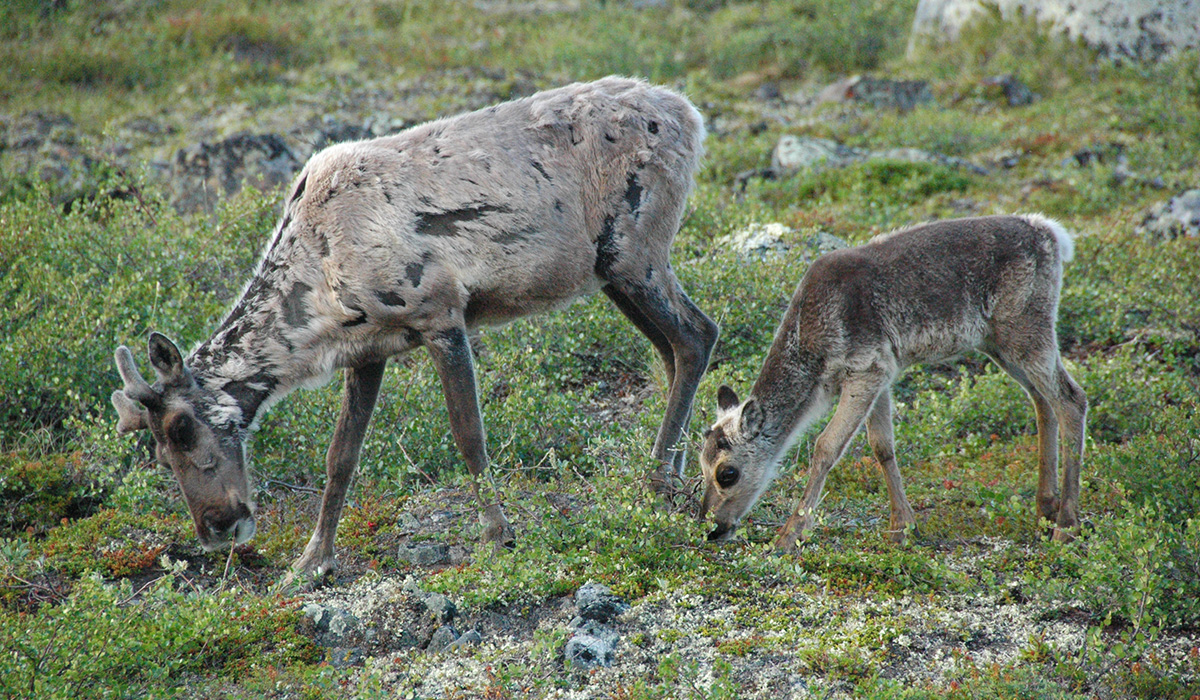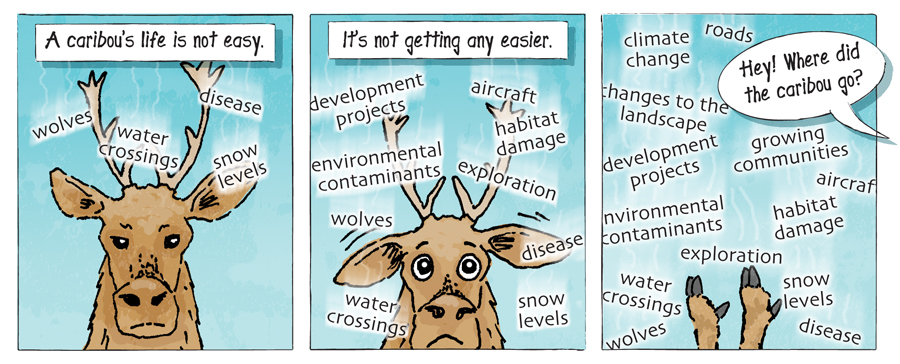Challenges Facing the Caribou
Numbers of barren-ground caribou go up and down in a regular cycle. This information comes from Indigenous traditional knowledge and, since the 1950s and 1960s, from aerial surveys. However, recent information points to continued declines in both the Caribou and Beverly herds, and more information is needed to find out why this is happening.
Three of the main concerns for the BQCMB are:
Wastage of caribou: Using all parts of the caribou and treating caribou with respect is very important. Youth must learn cultural and spiritual connections to the land and traditional customs and values. This has become harder in recent years due to modern distractions and other issues. Caribou are also being sold and traded using social media such as Facebook. This has increased the impact on the caribou herds even more.
Mineral exploration and development: The BQCMB and many communities have spoken out against exploration and development on key caribou habitats for many years, but mineral exploration has continued to grow across the Beverly and Qamanirjuaq range.
Roads: New and proposed roads are a serious concern for the BQCMB because they provide easier access to previously remote areas of caribou range for industry and hunters. Permanent all-season roads tend to create more problems for caribou than temporary winter roads.

Recent information points to continued declines in both the Caribou and Beverly herds, and more information is needed to find out why this is happening.
Other Threats:These include increased harvesting, wildfires, pollution, weather, disease, parasites, predators, and the effects of climate change.
These natural and human-caused effects on caribou and habitat add up over time, and their combined effects can cause problems for the herds. These cumulative effects can harm the land and wildlife, along with the people who depend on them.
